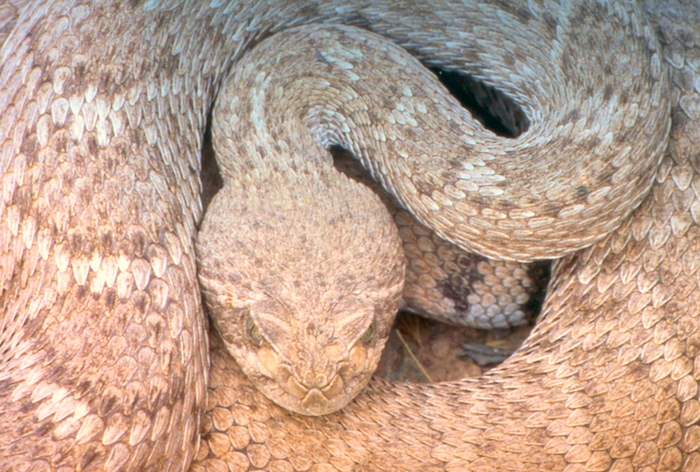State wildlife officials are offering some advice to Utahns who may encounter a rattlesnake this summer. Photo courtesy U.S. National Park Service
SALT LAKE CITY — Rattlesnakes are on the move in Cache Valley and other parts of the state. The hot dry climate puts the most plentiful venomous snake in people’s yards or irrigated fields, searching for water.

Snakes need a little water, but they don’t want as much water as most mammals and birds.
Utah Department Wildlife Services wants to remind residents the hot dry weather is when rattlesnakes are most often found in Utah. Just the word rattlesnake can strike fear in the hearts of some people, but they should not.
DWR encourages people to take the time to learn a little about how these dangerous reptiles behave and do a few simple things can go a long way in keeping you and the snakes safe.
During the summer, rattlesnakes are most active at dawn and dusk. Snakes mainly eat rodents, and birds. Hikers are most likely to encounter a rattlesnake on rocky, high-elevation slopes in Utah; however, a rattlesnake’s camouflage helps it to blend into its surroundings, so you may hear one before you see it or pass by without ever knowing it.
There are five rattlesnake species that live in Utah, the most common of which is the Great Basin rattlesnake.
It is against the law to kill or harass a rattlesnake; they are a protected species under Utah law. There is an exception to the law if you are threatened and defending yourself; otherwise, it is a class B misdemeanor to kill a rattlesnake.
Snakes are an important part of Utah’s ecosystem and help keep the rodent population in check.

You may see a rattlesnake while out camping or hiking this summer. However, snake bites are quite rare, and most people who are bitten by rattlesnakes are harassing or trying to illegally kill the snake. Like most animals, rattlesnakes fear humans and will do anything they can to avoid us.
“However, that changes if a snake thinks it’s threatened and there’s no way to escape,” DWR Native Species Coordinator Drew Dittmer said. “In that case, the snake will often strike to protect itself. Just don’t approach it. Give it plenty of space, and leave it alone. Respect the snake, and you will be safe. If you are bitten by a rattlesnake, seek immediate medical attention.”
When hiking on trails, make sure to always watch ahead and to check carefully before stepping over rocks, reaching onto ledges or sitting down on a rock or log.
DWR gives the following instructions when encountering a rattlesnake:
- Remain calm and do not panic. Stay at least 5 feet from the snake. Make sure to give it plenty of space.
- Do not try to kill the snake. Doing so is illegal and greatly increases the chance the snake will bite you.
- Do not throw anything at the snake, like rocks or sticks. Rattlesnakes may respond to this by moving toward the person doing the throwing, rather than away from them.
- Alert other people to the snake’s location. Advise them to use caution and to respect the snake. Keep children and pets away from the area.
- Keep your dog on a leash when hiking or camping. Allowing your dog to roam around increases the chance the dog will find a snake and get bitten.
- If you hear a rattle, don’t jump or panic. Try to locate where the sound is coming from before you react, so you don’t step closer to the snake or on top of it.
Keeping rattlesnakes out of your yard:

Depending on where you live, you could find a snake in your yard. Aside from building a fence that rattlesnakes can’t penetrate, here are some other useful tips to help keep rattlesnakes out of your yard:
- Reduce the number of places that provide snakes with shelter. Brush, wood, rock and junk piles are all things you should eliminate from your yard.
- Control rodent populations. Bird feeders and water are two of the main items that draw rodents to yards, which in turn can attract snakes.
-
-
-
-
-
-
-
- Avoid scaring away harmless snake species, such as gophersnakes. Having other snake species on or near your yard may deter rattlesnakes.
-
-
-
-
-
-

